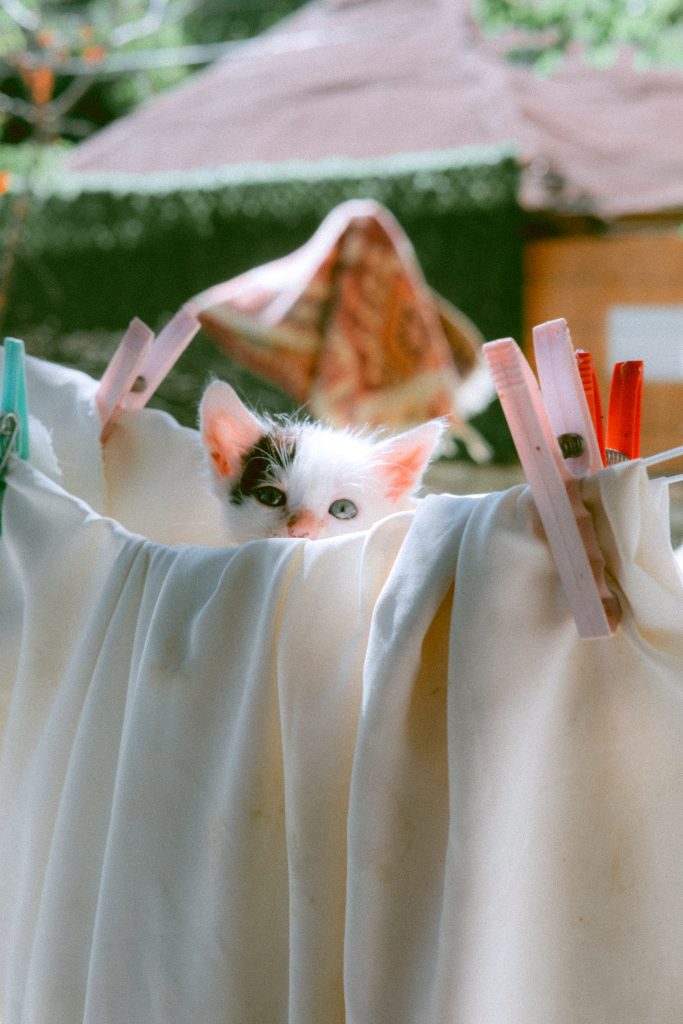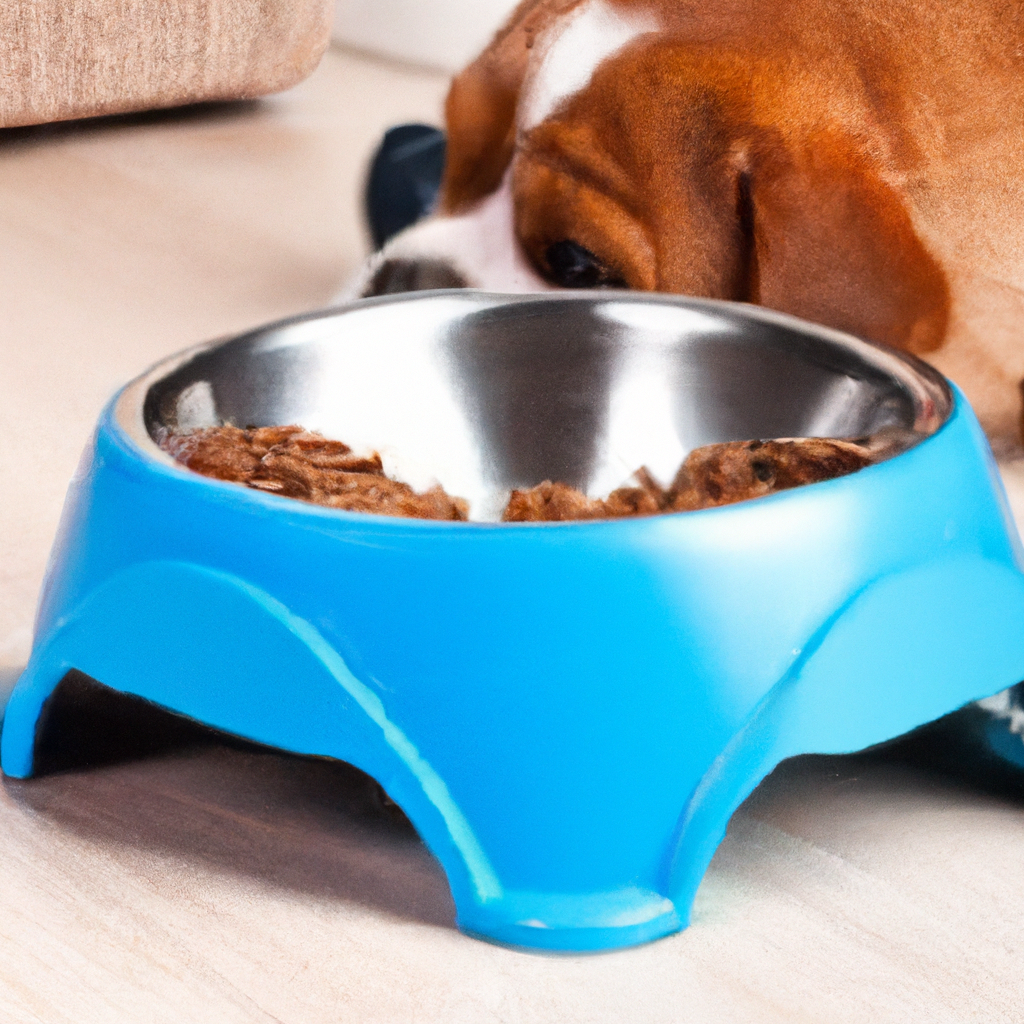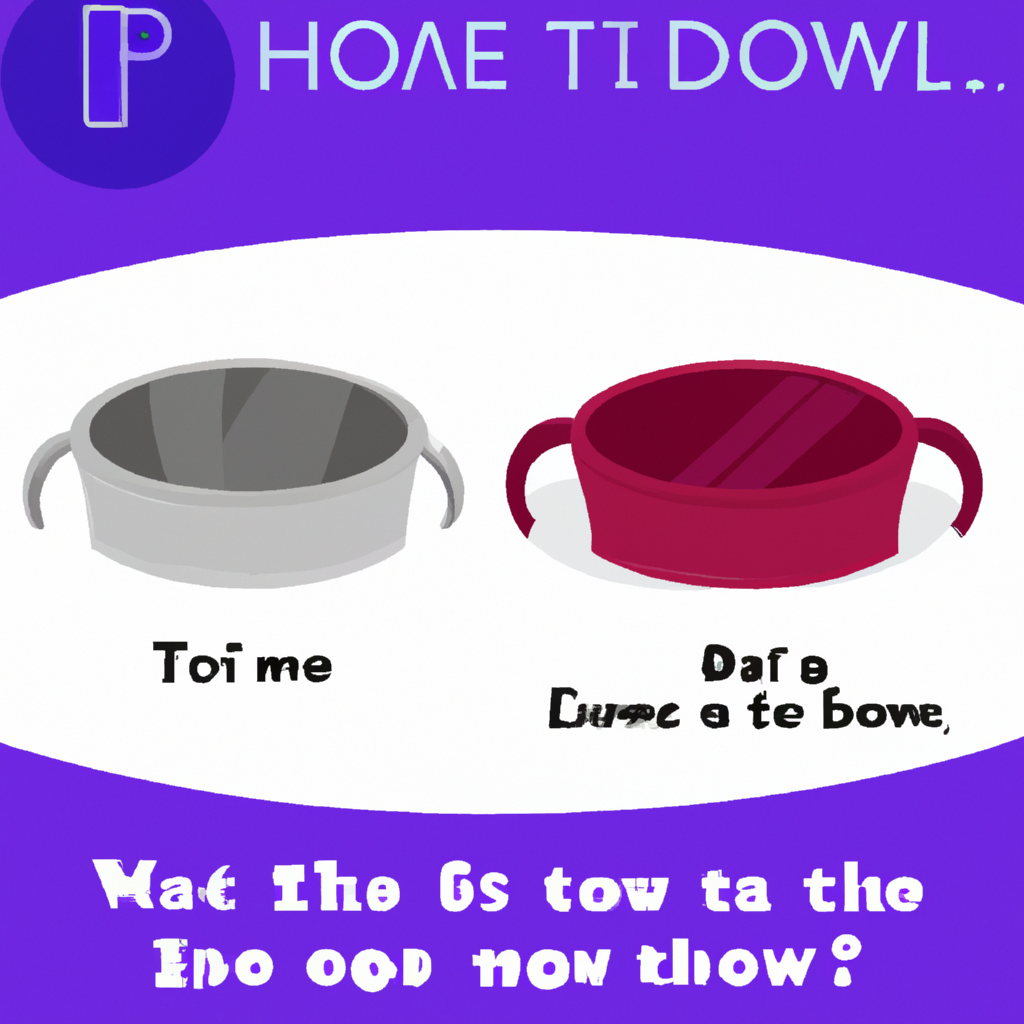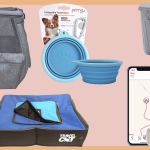When it comes to taking care of your furry friend, choosing the right dog bowl might not be the first thing that comes to mind. However, finding the best dog bowl for your pet can actually play a significant role in their overall well-being. From adjustable height bowls to slow-feeders, there are a wide variety of options available to cater to your pet’s specific needs. In this article, we will explore the different types of dog bowls on the market and discuss how they can contribute to optimal pet care. By the end, you’ll have a better understanding of which dog bowl is best suited for your furry companion.

Factors to Consider When Choosing a Dog Bowl
When it comes to choosing a dog bowl, there are several factors that you should take into consideration. Each dog is unique, and their individual needs should be addressed when selecting the right bowl. Here are some important factors to consider:
Size
The size of your dog bowl is crucial for ensuring that your furry friend is able to comfortably eat and drink. A bowl that is too small can cause your dog to struggle or make a mess, while a bowl that is too large may discourage them from emptying it completely. Take into account the size of your dog and their feeding habits when selecting the appropriate bowl size.
Material
There are various materials to choose from when it comes to dog bowls, each with its own advantages and disadvantages. Common materials include plastic, stainless steel, ceramic, and silicone. Consider factors such as durability, safety, and ease of cleaning when deciding on the material that is best suited for your dog.
Durability
A durable dog bowl is essential, especially if you have an energetic or playful pup. Look for a bowl that can withstand regular use without cracking or breaking. Dogs may sometimes chew on their bowls, so opting for a more durable material like stainless steel or ceramic can help prevent damage.
Ease of Cleaning
Keeping your dog bowl clean is important for preventing bacterial growth and maintaining your pet’s health. Look for bowls that are easy to clean, preferably dishwasher-safe. Some bowls may have intricate designs or hard-to-reach areas that can make cleaning a challenge. Consider the ease of cleaning when making your choice.
Special Needs
Certain dogs may have specific dietary or physical needs that require specialized bowls. For example, older dogs or those with joint issues may benefit from elevated bowls that reduce strain on their neck and back. Dogs with certain medical conditions may require bowls that help slow down their eating or prevent them from tipping over the bowl.
Design and Style
While the design and style of the dog bowl may not be the most important factor, it certainly can make a difference for some pet owners. There are countless designs and colors available, allowing you to select a bowl that matches your home decor or reflects your personal style. However, keep in mind that functionality and safety should always be the primary considerations.
Price
The price of a dog bowl can range significantly depending on the material, brand, and additional features. Set a budget and consider the long-term value of the bowl. Investing in a high-quality bowl may save you money in the long run by avoiding the need for frequent replacements.
Additional Features
Some dog bowls come with additional features that can enhance your pet’s mealtime experience. These can include non-slip bases to prevent sliding and tipping, measurement markings for portion control, and removable inserts for multiple food types. Consider which additional features may be beneficial for your dog and prioritize accordingly.
Customer Reviews and Ratings
Before making a final decision, it is always a good idea to read customer reviews and check product ratings. Real-life experiences from other pet owners can provide valuable insights into the pros and cons of different dog bowls. Look for bowls that have consistently positive reviews and high ratings to increase the chances of finding a top-quality product.
Veterinarian Recommendations
When in doubt, consult with your veterinarian for their professional advice. They may have specific recommendations based on your dog’s breed, age, health conditions, or behavior. Veterinarians have extensive experience and knowledge when it comes to pet care, so their input can be invaluable in making the best choice for your furry friend.
Different Types of Dog Bowls
Dog bowls come in various types, each with its own unique features and advantages. Understanding the different options available can help you make an informed decision based on your dog’s specific needs. Here are some of the most common types of dog bowls:
Plastic Bowls
Plastic bowls are lightweight, affordable, and come in a wide range of colors and designs. They are generally durable and non-breakable, making them suitable for active dogs. However, it’s important to choose a high-quality plastic bowl that is BPA-free and dishwasher-safe to ensure the safety and hygiene of your pet.
Stainless Steel Bowls
Stainless steel bowls are widely regarded as one of the best options for dog bowls. They are hygienic, durable, and resistant to chewing or scratching. Stainless steel bowls are also easy to clean and dishwasher-safe. Additionally, they are less likely to harbor bacteria or cause allergies compared to some other materials.
Ceramic Bowls
Ceramic bowls are a popular choice among pet owners due to their aesthetics and durability. They come in a variety of designs and colors, allowing you to find a bowl that suits your personal style. Ceramic bowls are heavy and therefore less prone to tipping over. However, they can be breakable if dropped, so it’s important to handle them with care.
Silicone Bowls
silicone bowls are collapsible and portable, making them an excellent choice for travel or outdoor activities. They are lightweight and easy to clean, as they can be easily washed or wiped down. However, silicone bowls may not be as durable as other materials and may not be suitable for dogs that tend to chew on their bowls.
Automatic or Gravity Feeders
Automatic or gravity feeders are designed to dispense food continuously as your dog eats. These bowls are especially useful for pet owners who are away from home for long periods or have busy schedules. Automatic feeders can help regulate portion control and ensure that your dog has access to food without overeating.
Elevated Bowls
Elevated bowls are raised off the ground, providing a more comfortable position for your dog to eat and drink. They can be particularly beneficial for larger breeds, older dogs, or those with joint or neck issues. Elevated bowls promote proper posture and digestion, reducing the risk of bloating or discomfort.
Collapsible Bowls
Collapsible bowls are compact and convenient for on-the-go pet owners. They fold or collapse into a small size, making them easy to carry in a bag or pocket. Collapsible bowls are often made of silicone or fabric and are suitable for outdoor adventures, travel, or emergency situations.
Slow Feed Bowls
Slow feed bowls are designed to slow down a dog’s eating pace, which can help prevent choking, bloating, and obesity. They often feature maze-like patterns or obstacles that force your dog to eat more slowly. Slow feed bowls are particularly useful for dogs that tend to gulp their food quickly.
Travel Bowls
Travel bowls are specifically designed for use on-the-go, whether you’re heading to the park or going on a road trip. These bowls are compact, lightweight, and easily foldable or collapsible. They are typically made of fabric, silicone, or other portable materials that are easy to clean and transport.
Smart Bowls
Smart bowls are technologically advanced pet accessories that can be connected to your smartphone or home devices. They often include features such as automatic portion control, activity tracking, and even Wi-Fi connectivity. Smart bowls allow you to monitor your dog’s eating habits and track their health and activity levels.
Benefits of Using the Right Dog Bowl
Using the right dog bowl can have a significant impact on your pet’s overall well-being and quality of life. Here are some of the benefits that come with choosing the right dog bowl:
Promotes Healthy Eating Habits
The right dog bowl can promote healthy eating habits by encouraging your dog to eat at a slower pace. This can help prevent common digestive issues such as bloating, gas, and stomach discomfort. Slow feed bowls or puzzle feeders are especially effective in slowing down your dog’s eating speed.
Reduces Bloat and Gastric Dilatation-Volvulus (GDV)
Bloat, also known as gastric dilatation-volvulus (GDV), is a life-threatening condition that can occur in dogs, particularly large and deep-chested breeds. Using an elevated bowl can help reduce the risk of bloat by promoting proper digestion and preventing the ingestion of excessive air while eating.
Prevents Allergies and Skin Irritations
Some dogs may develop allergies or skin irritations from certain materials, such as plastic or ceramic bowls. By choosing a hypoallergenic material like stainless steel or silicone, you can minimize the risk of allergic reactions and keep your pet’s skin and coat healthy.
Improves Digestion
Proper digestion is crucial for your dog’s overall health. High-quality dog bowls that are designed to promote slow eating or proper posture can aid in digestion by allowing food to be properly chewed and broken down. This can minimize the risk of gastrointestinal issues and improve nutrient absorption.
Decreases Food Aggression
Food aggression can be a common behavioral issue among dogs, especially in multi-pet households. Having separate bowls for each pet can help reduce food aggression and prevent conflicts during mealtimes. Additionally, bowls with dividers or inserts can be useful for dogs that require special diets or need to eat separate foods.
Enhances Posture and Joint Health
Elevated bowls can help improve your dog’s posture and reduce strain on their neck, back, and joints while eating. This is especially beneficial for older dogs or those with arthritis or other mobility issues. By promoting a more comfortable eating position, elevated bowls can contribute to your dog’s overall joint health and well-being.
Reduces the Risk of Accidents and Spills
Choosing a dog bowl with a non-slip base can greatly reduce the risk of accidents and spills. This is particularly important for energetic or clumsy dogs that may knock over their bowls while eating or drinking. Non-slip bowls provide stability and prevent unnecessary messes in your home.
Satisfies Special Dietary Needs
Some dogs may have special dietary needs or restrictions that require specific types of bowls. For example, dogs with flat faces or short muzzles may benefit from shallow bowls that prevent them from pushing their faces into the food. Dogs with food allergies or sensitivities may require stainless steel bowls to avoid potential reactions.
Enriches Mealtime Experience
Mealtime can be an enjoyable and bonding experience between you and your dog. Using the right dog bowl can enhance the mealtime experience by providing a comfortable and safe eating environment. Additionally, certain interactive bowls or puzzle feeders can stimulate your dog’s mind and provide mental enrichment during meals.
Contributes to Overall Pet Hygiene
A clean and hygienic dog bowl is essential for maintaining your pet’s health and hygiene. Choosing a bowl that is easy to clean and made of non-porous materials can help prevent bacterial growth and ensure that your pet’s food and water are free from contamination. Regular cleaning and proper maintenance of the bowl contribute to your dog’s overall hygiene.
Features to Look for in Dog Bowls for Optimal Pet Care
When selecting a dog bowl for optimal pet care, there are certain features that you should look for. These features can enhance your pet’s safety, comfort, and overall well-being. Here are some important features to consider:
Non-Slip Base
A bowl with a non-slip base is especially important if you have a lively or enthusiastic dog. This feature ensures that the bowl stays in place during mealtime and prevents spills or accidents. Look for bowls with rubberized or silicone bases that provide stability on various surfaces.
Dishwasher-Safe
Cleaning your dog’s bowl regularly is essential for maintaining their health and hygiene. Choosing a dishwasher-safe bowl can make this task quick and convenient. Dishwasher-safe bowls are designed to withstand high heat and rigorous washing, ensuring thorough cleanliness and eliminating the need for hand scrubbing.
BPA-Free
Bisphenol A (BPA) is a harmful chemical that can leach into food and water from certain plastics. Opt for dog bowls that are labeled BPA-free to ensure the safety of your pet. BPA-free bowls are made from non-toxic materials that do not pose a risk of contamination.
Microwave-Safe
Some pet owners prefer to warm their dog’s food or use heated meals for specific dietary needs. In such cases, choosing a microwave-safe bowl can be beneficial. Microwave-safe bowls are designed to withstand the heat of the microwave without warping or melting. Always follow the manufacturer’s instructions when using a microwave.
Anti-Chew
If you have a dog that tends to chew on their bowl, selecting an anti-chew bowl can help prevent damage and ensure its longevity. Anti-chew bowls are made from durable materials that are resistant to chewing and biting. Stainless steel bowls are typically a good choice for dogs with chewing tendencies.
Anti-Ant
Ants are a common problem when it comes to pet food, especially during warmer months. Look for bowls with features that prevent ants from crawling into the food, such as an anti-ant rim or elevated design. These features can help keep your dog’s food clean and free from unwanted pests.
Portion Control
For dogs that need to maintain a healthy weight or have specific dietary requirements, portion control is crucial. Consider bowls that have built-in portion control features, such as measurement markings or dividers. These bowls can help you accurately measure your dog’s food and prevent overfeeding.
Measurement Markings
Measurement markings on dog bowls can be useful for monitoring your dog’s food intake and following specific feeding guidelines. These markings can help you keep track of portion sizes and ensure that your dog is receiving the appropriate amount of food for their size and activity level.
Easy-Grip Design
An easy-grip design can make handling and moving the dog bowl more comfortable for you. Look for bowls that have ergonomic handles or textured patterns that provide a secure grip. This can be especially beneficial if you have a large or heavy dog bowl.
Removable Inserts for Multiple Food Types
If you feed your dog a combination of dry kibble, wet food, or other food types, consider bowls with removable inserts. These inserts allow you to customize the bowl based on your dog’s specific dietary needs. They can be easily cleaned and switched out to accommodate different food types.

How to Choose the Right Size of Dog Bowl
Choosing the right size of dog bowl is crucial to ensure that your pet is able to eat and drink comfortably. Here are some factors to consider when determining the appropriate bowl size for your dog:
Consider the Breed and Size of Your Dog
The breed and size of your dog play a significant role in determining the suitable bowl size. Larger breeds will generally require larger bowls, while smaller breeds can manage with smaller bowls. Take into account the height and weight of your dog when selecting the appropriate size.
Determine the Ideal Bowl Capacity
The capacity of the bowl should be based on your dog’s food and water requirements. Larger breeds or dogs that require more food due to their activity level may need bowls with a higher capacity. On the other hand, smaller dogs or those on portion-controlled diets may do well with smaller bowls.
Account for Multiple Pets
If you have multiple dogs or pets in your household, it’s important to consider their needs when choosing the right bowl size. Each pet should have their own bowl to prevent competition or resource guarding. Ensure that each bowl is of an appropriate size for each pet, accommodating their unique needs.
Consider the Age and Activity Level of Your Dog
Puppies and active dogs may require larger bowls to accommodate their growing bodies and higher food intake. Older dogs or dogs with lower activity levels may need smaller bowls to prevent overfeeding. Consider the age and activity level of your dog when selecting the bowl size.
The Right Size for Wet and Dry Food
If you provide your dog with both wet and dry food, consider the appropriate sizes for each food type. Wet food may require a slightly wider bowl to accommodate the moisture and prevent spillage. Dry kibble can generally be served in a deeper bowl that allows your dog to easily access and consume the food.
Consult with Your Veterinarian for Specific Needs
To ensure that you choose the right size of bowl for your dog, consult with your veterinarian. They can provide specific recommendations based on your dog’s breed, size, nutritional requirements, and any special dietary needs. Veterinarians have the expertise to guide you in selecting the most appropriate bowl size for your pet.
Common Problems with Poorly Designed Dog Bowls
Using a poorly designed dog bowl can lead to various issues that can compromise your pet’s health and well-being. Here are some common problems that can arise with poorly designed dog bowls:
Sliding and Spilling
Dog bowls that lack a non-slip base or stability can easily slide or tip over during mealtime. This can lead to spills, messes, and frustration for both you and your pet. Sliding bowls can also cause dogs to become anxious or stressed while eating. Opting for a bowl with a non-slip base can help prevent these issues.
Chewing and Destruction
Some dogs may have a tendency to chew on their bowls, especially if they are made of certain materials such as plastic. Chewing can lead to damage and destruction of the bowl, posing potential health risks if the dog ingests small pieces. Choosing a bowl made of a durable and chew-resistant material like stainless steel can minimize this problem.
Unsafe Materials and Chemicals
Certain dog bowls, particularly those made of low-quality plastic, may contain harmful chemicals such as BPA. These chemicals can leach into your dog’s food or water, posing a risk to their health. Always opt for bowls made of safe, non-toxic materials that are free from harmful chemicals.
Bacterial Growth and Hygiene Issues
Dog bowls that are difficult to clean or have hard-to-reach areas can harbor bacteria and other pathogens. This can lead to contamination of the food and water, increasing the risk of digestive issues or infections. Always choose bowls that are easy to clean and sanitize to ensure optimal hygiene.
Difficulty in Cleaning
Cleaning the dog bowl regularly is essential for maintaining your pet’s health and preventing bacterial growth. Bowls with intricate designs, narrow openings, or hard-to-clean surfaces can make the cleaning process difficult. Choose bowls that are designed for easy cleaning, preferably ones that are dishwasher-safe.
Discomfort and Poor Posture
Using a bowl that is too small or not elevated can cause discomfort and strain on your dog’s neck, back, and joints. This can lead to poor posture and potentially contribute to long-term joint issues. Ensure that the bowl provides a comfortable eating position and promotes proper posture for your dog.
Inadequate Portion Control
If you have a dog that requires portion control due to weight management or specific dietary needs, using a bowl without built-in portion control features can make it challenging to measure accurately. Inaccurate portioning can lead to overfeeding or underfeeding, compromising your dog’s health. Look for bowls with measurement markings or dividers to ensure proper portion control.
Food Aggression and Resource Guarding
Using communal bowls or bowls that are too small can lead to food aggression and resource guarding behavior among dogs. This can cause tension and conflicts during mealtimes, resulting in an unhealthy eating environment. Providing each dog with their own appropriately sized bowl can help prevent food aggression and promote a more peaceful mealtime experience.
Lack of Suitability for Special Dietary Needs
Certain dogs may have special dietary needs that require specific types of bowls. For example, dogs with flat faces or short muzzles may require shallow bowls to prevent them from pushing their faces into the food. Dogs with allergies or sensitivities may need bowls made of hypoallergenic materials. Using a bowl that is not suitable for your dog’s dietary needs can cause discomfort or difficulties during mealtime.
Lack of Durability
Poorly designed dog bowls may lack durability, leading to frequent replacements and increased expenses. Dogs that tend to chew on their bowls or play roughly with them can quickly cause damage to low-quality bowls. Opt for bowls made from robust and long-lasting materials to ensure their durability over time.

Tips for Proper Dog Bowl Hygiene
Maintaining proper hygiene for your dog’s bowl is essential for their health and well-being. Here are some tips for keeping your dog’s bowl clean and sanitary:
Clean the Bowl After Each Meal
Ideally, you should clean your dog’s bowl after each meal to prevent the growth of bacteria and other pathogens. Leftover food or moisture in the bowl can rapidly multiply bacteria, leading to potential health risks. Get into the habit of thoroughly cleaning the bowl immediately after your dog finishes eating.
Use Hot Water and Mild Soap
When cleaning your dog’s bowl, use hot water and a mild soap or dishwashing liquid. This helps remove any food residue or oils from the bowl and provides a thorough clean. Rinse the bowl completely to ensure that no soapy residue remains.
Avoid Harsh Chemicals and Abrasive Scrubbing
Avoid using harsh chemicals, abrasive scrubbers, or brushes that can scratch the surface of the bowl. These can damage the bowl’s material, leading to potential bacterial growth and decreased durability. Stick to gentle cleaning methods to preserve the bowl’s integrity.
Regularly Inspect for Damage or Scratches
Regularly inspect your dog’s bowl for any signs of damage or scratches. Damaged bowls can be breeding grounds for bacteria and may pose a health risk to your pet. If you notice any cracks, deep scratches, or other damage, it’s time to replace the bowl with a new one.
Replace Old and Worn-out Bowls
Over time, dog bowls can become worn-out, especially if they are made of plastic or have been subjected to chewing. Replace old or worn-out bowls to ensure that your dog has a clean and safe eating environment. Investing in a high-quality, durable bowl can save you money in the long run by avoiding frequent replacements.
Store Bowls in Clean and Dry Areas
When not in use, store your dog’s bowls in clean and dry areas. Storing them in a separate cupboard or designated spot can help prevent contamination from other items, dust, or pests. Ensure that the storage area is well-ventilated to prevent the growth of mold or mildew.
Avoid Contamination from Other Pets
If you have multiple pets, it’s important to keep their bowls separate to prevent cross-contamination. Each pet should have their own designated bowl to avoid the spread of bacteria or parasites. This is particularly important if one pet has special dietary needs or is on medication.
Wash Food and Water Bowls Separately
To prevent cross-contamination and ensure optimal hygiene, wash your dog’s food and water bowls separately. Food bowls can contain oils, fats, and remnants that might not be easily removed with water alone. Washing them separately ensures that both bowls receive a thorough and hygienic clean.
Pay Attention to Hard-to-Clean Areas
Certain dog bowls have intricate designs or hard-to-reach areas that can be difficult to clean. Pay special attention to these areas, using a small brush or toothbrush if necessary. Ensure that all nooks and crannies are thoroughly cleaned to prevent the buildup of bacteria or food residue.
Consider Using Dishwasher-Safe Bowls
If you have a dishwasher, consider using dishwasher-safe bowls for added convenience and cleanliness. Dishwasher-safe bowls are designed to withstand the high heat and rigorous cleaning of a dishwasher. Always check the manufacturer’s instructions to ensure that the bowl is indeed dishwasher-safe.
Best Practices for Feeding Your Dog
Maintaining a healthy feeding routine is important for your dog’s nutrition and overall well-being. Here are some best practices to follow when feeding your dog:
Establish a Consistent Feeding Schedule
Dogs thrive on routines, and establishing a consistent feeding schedule can help maintain their overall health. Feed your dog at the same times every day to establish a routine. Consistency in feeding times can also prevent overeating or erratic hunger behaviors.
Measure Food Portions
Accurate portion control is crucial for ensuring that your dog receives the appropriate amount of food for their size and activity level. Use a measuring cup or scale to measure the exact amount of food recommended for your dog’s weight and follow the feeding guidelines provided by your veterinarian or the dog food manufacturer.
Avoid Free-Feeding
Free-feeding, where food is left out all day for your dog to eat at will, can lead to overeating and weight gain. Instead, feed your dog at designated meal times and avoid leaving food out when they are not actively eating. This helps regulate portion control and prevents excessive food consumption.
Provide Clean and Fresh Water
Always ensure that your dog has access to clean and fresh water at all times. Water should be changed daily and the bowl should be cleaned regularly to prevent bacterial growth and contamination. Consider choosing a water bowl that is easy to clean and refill, especially if your dog drinks a lot throughout the day.
Consider Elevated Bowls for Large Breeds
Large and giant breed dogs can benefit from elevated bowls that raise their food and water off the ground. This promotes a more comfortable eating position and reduces strain on their neck and back. Elevated bowls can also help prevent bloating and other digestive issues commonly experienced by large breeds.
Monitor Food and Water Intake
Keep an eye on your dog’s food and water intake to ensure that they are consuming an appropriate amount. Sudden changes in eating or drinking habits can indicate health issues or stress. Monitor food and water levels regularly to ensure that your dog is maintaining a healthy appetite and hydration.
Do Not Overfeed
Overfeeding can lead to obesity and a range of health problems in dogs. Follow the recommended portion sizes for your dog’s breed, age, and activity level, and avoid overindulging them with extra treats or table scraps. If you are unsure about the appropriate portion size, consult with your veterinarian.
Observe and Adjust According to Your Dog’s Needs
Every dog is unique and may have different dietary requirements or preferences. Observe your dog’s eating habits, energy levels, and overall health. Adjust their food portions or feeding schedule as necessary to ensure that they are receiving the right amount of nutrients to maintain their well-being.
Consider Slow Feed Bowls for Fast Eaters
If your dog tends to eat their food too quickly, consider using a slow feed bowl. These bowls are designed to inhibit rapid eating and encourage slower, more controlled eating. Slow feed bowls can help prevent choking, bloating, and other digestive issues associated with fast eating.
Incorporate Interactive Feeding Toys for Mental Stimulation
To keep your dog mentally stimulated during mealtime, consider using interactive feeding toys. These toys require your dog to work for their food, engaging their natural instincts and providing mental stimulation. This can be particularly beneficial for dogs who tend to gulp their food or need extra mental exercise.

Top Dog Bowl Brands for Optimal Pet Care
There are numerous dog bowl brands available on the market, each offering a variety of features and benefits. Here are some top dog bowl brands known for their quality and dedication to optimal pet care:
1. Brand A
Brand A is renowned for its durable and stylish stainless steel dog bowls. They offer a range of bowl sizes to cater to different breed sizes and food requirements. Brand A’s bowls are dishwasher-safe, BPA-free, and designed with non-slip bases for stability during mealtime.
2. Brand B
Brand B specializes in elevated bowls that promote proper digestion and joint health. Their bowls are made from high-quality materials, such as ceramic or bamboo, ensuring durability and easy cleaning. Brand B also offers a variety of stylish designs to suit different home interiors.
3. Brand C
Brand C is known for its innovative slow feed bowls that encourage healthy eating habits. Their bowls feature unique maze-like patterns that slow down eating and prevent bloating. Brand C’s bowls are made from food-safe materials and are easy to clean.
4. Brand D
Brand D focuses on eco-friendly dog bowls made from sustainable and non-toxic materials. Their bowls are often made from recycled materials and are BPA-free. Brand D’s bowls are dishwasher-safe and come in various sizes and designs to cater to different dog breeds.
5. Brand E
Brand E specializes in collapsible travel bowls that are convenient for pet owners on the go. Their bowls are made from silicone and can easily fold or collapse into a compact size. Brand E’s bowls are lightweight, durable, and suitable for outdoor adventures or trips.
6. Brand F
Brand F is known for its smart bowls that integrate technology into the feeding routine. Their bowls can be connected to smartphone apps and provide real-time feeding data, activity tracking, and portion control. Brand F’s smart bowls are made from high-quality materials and are designed with ease of use in mind.
7. Brand G
Brand G offers a range of ceramic bowls that combine style and functionality. Their bowls are lead-free and dishwasher-safe, making them easy to clean and maintain. Brand G’s bowls are available in various sizes and designs to suit different dog breeds and decor preferences.
8. Brand H
Brand H specializes in anti-ant bowls that prevent ants from accessing the food. Their bowls feature unique design elements that act as obstacles for ants, ensuring that your dog’s food remains pest-free. Brand H’s bowls are made from non-toxic materials and are safe for regular use.
9. Brand I
Brand I focuses on collapsible silicone bowls that are versatile and durable. Their bowls are suitable for both indoor and outdoor use and can be easily cleaned. Brand I’s bowls come in various sizes and colors, allowing pet owners to choose according to their preferences.
10. Brand J
Brand J offers a wide range of plastic bowls that are affordable and practical. Their bowls come in various sizes and colors, making them suitable for different dog breeds and home decors. Brand J ensures that their bowls are BPA-free and dishwasher-safe for ease of use and hygiene.
Conclusion
Choosing the right dog bowl is vital for your pet’s health, comfort, and overall well-being. By considering factors such as size, material, durability, ease of cleaning, and special needs, you can ensure that your furry friend has the best possible feeding experience. Selecting the appropriate type of dog bowl, whether it be plastic, stainless steel, ceramic, silicone, or one with additional features, can address your dog’s unique requirements. Regularly maintaining proper hygiene and following best practices for feeding your dog further contributes to their optimal care. By consulting with your veterinarian and choosing high-quality bowls from top brands, you can provide your pet with a safe, comfortable, and enjoyable mealtime experience.






